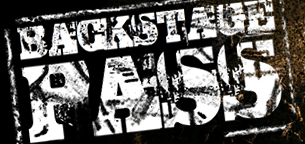Final Manuscript Preparation Guidelines for Backstage Pass
Backstage Pass is an annual music industry journal written, edited and published by the students of the University of the Pacific. The journal adheres to a simplified Chicago Manual of Style format. Submissions using Microsoft Word are the standard format, although a PDF version of the article may also be submitted from Pages or another word processing program. Please note: all papers should be written in English using proper and standard grammar.
The details for how to properly format your article including in-text citations and basic style guidelines are listed below.
Formatting Requirements
- Title – your paper should begin with the title of the article, centered and in 16-point font. Double space and put your name Single space to the next line for your major and expected year of graduation. This should be in 14-point font. Single space and put the name of your institution, centered in 14-point font. Double space again, and then start your paper.
- Fonts – all papers should be submitted using Times New Roman font, with the body of the article in 12-point font. Single space the body of your text. If you wish to emphasize a word or phrase, please use italics, not bold or underline. The font color should be set to black throughout the paper, unless you are using a table, chart or graph where using colored fonts will help the reader understand the information. If you choose to use subheadings in your paper, please use Arial for all subheadings. Insert a line space above and below each subheading.
- Page Layout – please use the “Normal” margin setting in MS Word for your paper. It is the default when you first open the program. Do not add in headers, footers or page numbers. These will be added by the editors.
- Indentation, line spacing and justification – do not indent first line of new paragraphs. Double space between paragraphs. Your paper should be submitted with left-side justification. Long quotations (four or more lines of text) should be set off from the main body of the article by an additional space above and below the quotation. Every line of long quotation should be indented by 0.5 inch. Do not add quotation marks and be sure to include a citation at the end of the quotation.
- Tables and Figures – as much as possible, tables and figures should appear in the document near where they are referenced. Large tables or figures may be placed on their own page by themselves. Tables and figures should be high-resolution figures to provide the best clarity possible.
- Bibliography – a bibliography of all sources used in the preparation of the article should be included with the submission. Start the bibliography two double spaces after the end of the article, with the word “Bibliography” centered on the page in 16-point font. The author shall put these sources into alphabetical order by the last name of the author and include at minimum [Author last name, first name. Publication name, date, volume issue, pages.] Do not number the citations. If no specific author is listed for a source, use the name of the publication in lieu of author last name. All bibliography entries are formatted using 0.5 inch hanging tab. Online-only publications do not generally use page numbers so none are required in citations. For online references, please also include the website URL and date accessed in this format [www.source.net, date accessed: Month, day, year.]
- In-text citations – when a specific quotation or data point from a source is referenced in the article, an in-text citation should be inserted, using the MS Word “Insert Footnote” feature. This will place each footnote at the bottom of the page on which it appears. Please use Arabic numbering for all footnotes. Footnote numbers in the text must follow and not precede punctuation marks. The Footnote format should be [Author last name, first name. Publication name, date, volume issue, page.] Additional citations from the same article need only refer to [Author last name, page.]
- In-text references to book, song, films, etc. – formatting for books, albums, songs, movies, etc. Book, motion picture and album titles are all written in italics as follows: 1989, Tommy, The Black Album; song titles are written using quotation marks as follows: “Happy,” “Like a Rolling Stone” or “I’m Not in Love.”
- Numbers – from one to nine are always spelled out; numbers greater than nine are expressed using numerals: 123, 14, 10, 467.
- Organization names & Acronyms – and/or industry jargon commonly expressed as an acronym are always specified fully when first cited, after which time they may be referred to with only the acronym itself. For example, the Recording Industry Association of America (RIAA) vs. just listing the RIAA; Electronic Frontier Foundation (EFF) vs. only referring to that body as the EFF.
- Author’s proofreading – spelling, grammar, syntax and sentence sense are all important factors in determining which submissions may be published. Please be sure to use the spell check option and to also carefully proofread your submission out loud prior to sending it to the journal editors. Additionally, the campus student writing center provides an excellent resource for authors to have a second set of eyes review their article prior to submission.
- Questions – if you have any questions prior to submission, please use the links on the journal’s home page to communicate with the editor in charge of the department for which you plan to submit an article.


